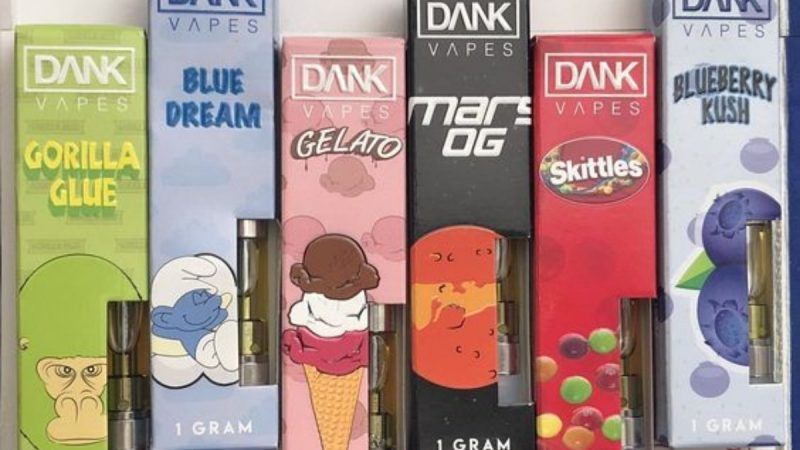New CDC Report Highlights the Risks of Black-Market THC Vapes
The vast majority of patients with vaping-related lung injuries who used cannabis products said they got them from "informal sources."

According to a new report on the sources of cannabis products used by patients with vaping-related lung injuries, 84 percent said they had obtained them from "informal sources." The study, conducted by researchers at the Centers for Disease Control and Prevention (CDC), reinforces the point that the problem of potentially hazardous additives or contaminants is especially acute in the black market, where there is no quality control and consumers have no way to verify the contents of the products they purchase.
The information about THC vape sources, which is based on interviews with 809 patients or their relatives, found that 16 percent "reported acquiring their products from only commercial sources." USA Today reads that to mean they "obtained the product from legal dispensaries." But as the CDC notes, commercially obtained products are not necessarily legal products. The CDC's definition of "commercial sources," for example, includes "pop-up shops," which are not legal in states that license marijuana retailers.
"Even in states where marijuana has been legalized for recreational use by adults," the study says, "it might be difficult to determine whether a source is licensed through the state. For example, in California, the Bureau of Cannabis Control seized nearly 10,000 illegal vape pens from unlicensed retailers during December 10–12, 2019." Thanks to high taxes, local bans, burdensome regulations, and licensing delays, illegal dealers still account for something like three-quarters of California's cannabis market.
Another consideration is that patients may be reluctant to admit that they bought THC vapes from black-market dealers. We know that many patients who claim to have vaped only nicotine actually used THC. In a recent study, the CDC notes, nine of the 11 patients who reported no use of cannabis products had THC or its metabolites in their lung fluid. In other words, self-reports were inaccurate in 82 percent of the cases, and even that rate may be an underestimate, since THC would not necessarily be detectable in the lung fluid of patients who had consumed it. There may be a similar problem with patients who deny using black-market products.
Still, it is certainly possible that some patients bought vapes only from state-licensed dispensaries. Two deaths in Oregon, for example, involved patients who said they bought THC vapes from legal sources. Some licensed retailers may have sold products containing vitamin E acetate, a relatively new diluting and thickening agent that has been strongly implicated in the lung disease outbreak. The point is not that legalization eliminates all risk but that it makes risk easier to manage.
Legal manufacturers tell consumers the ingredients in their vapes, and they are liable for fraud if they lie. State-licensed laboratories in places where marijuana is legal can test products for vitamin E acetate and other potentially harmful additives or contaminants. A study by California's Anresco Laboratories, for example, found vitamin E acetate in 60 percent of the illegal cannabis products it tested but none of the legal products.
Marijuana regulators in Colorado, Oregon, and Washington have banned the use of vitamin E acetate. Last month the Massachusetts Cannabis Control Commission, which requires screening for vitamin E acetate, reported that the additive was not detected in tests of nearly 100 legal THC vape products. Regulators in Alaska, which so far has not reported any vaping-related deaths, found that state-licensed manufacturers were not using vitamin E acetate.
Safeguards like these are impossible in the black market, where people are buying products of unknown provenance and composition. Not surprisingly, cases of vaping-related lung injuries are concentrated in states where recreational sales remain illegal. A recent analysis of CDC data by the Cato Institute's Jeffrey Miron and the Reason Foundation's J.J. Rich found that "states with legalized marijuana have reported approximately 6.7 fewer lung injuries per million people than states that have not yet permitted recreational cannabis sales."
As of January 7, the CDC had received 2,602 reports of vaping-related respiratory illnesses, including 57 deaths. According to the new study, which includes information from nearly 2,000 patients, just 13 percent reported that they had vaped only nicotine. That is almost certainly an overestimate. As the lung fluid study suggests, patients may be reluctant to admit illegal drug use and in any case may not actually know the contents of black-market products.
The CDC nevertheless is continuing to recommend that people "consider refraining from the use of all e-cigarette, or vaping, products" until its investigation has been completed. But it also cautions that "adults using e-cigarette, or vaping, products to quit smoking should not return to smoking cigarettes." That is sound advice, since vaping nicotine is indisputably much less dangerous than smoking.
[This post has been revised to note that the CDC's definition of "commercial sources" includes "pop-up shops."]


Show Comments (10)